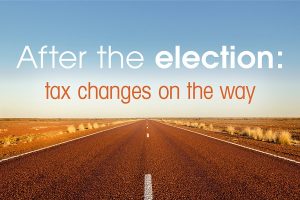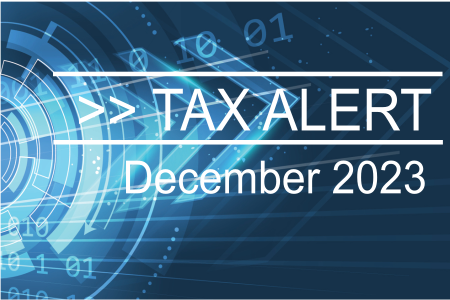With the uncertainty of the federal election now out of the way, we can look forward to some significant reforms to Australia’s existing tax system.

The Morrison Government went into the election with a comprehensive suite of tax proposals and these are now likely to pass swiftly through Parliament, as the Opposition has indicated it will support the legislation.
So just what are the changes we are likely to see when it comes to both our personal tax and the taxes that apply to small and medium-sized businesses?
Higher tax offset for personal tax
A centrepiece of the Government’s re-election campaign was its beefed up tax plan providing $158 billion in immediate tax relief. The first part of this plan is a doubling of the already legislated Low and Middle Income Tax Offset.
In the 2018-19 financial year, if legislation passes in time, taxpayers earning up to $37,000 will receive a tax offset of up to $255, rising to $1,080 for those earning between $48,000 and $90,000, before phasing out to $0 for taxpayers earning over $126,000.
Before you start checking your payslip for extra dollars, however, it’s important to understand that this is a tax offset, not a tax cut. That means it reduces the amount of tax you pay when lodging your annual tax return, rather than giving you more money in your pay packet.
Flatter tax rates in the longer term
In 2022-23, there are further proposed changes to the tax system with the top threshold for the 19 per cent tax bracket increasing to $45,000.
A key part of the Government’s campaign promises included a new proposal to lower the 32.5 per cent tax rate to 30 per cent in 2024-25, which would more closely align the middle tax bracket with corporate tax rates. This means by 2024-25, a projected 94 per cent of taxpayers would have a marginal tax rate of no more than 30 per cent.
Under the proposal, from 1 July 2024, Australia’s tax system would only have three tax rates: 19 per cent, 30 per cent and 45 per cent (see table).
Small business tax changes
Small and medium-sized enterprises (SMEs) will also see some important tax changes under the re-elected Morrison Government, with the proposed cut to business tax rates being fast tracked. Instead of SMEs having to wait until 2026-27 for a cut in their tax rate from 27.5 per cent to 25 per cent, this will now occur five years earlier, starting 1 July 2021.
This means SMEs with an annual turnover of less than $50 million will enjoy a 25 per cent tax rate, compared to the standard company tax rate of 30 per cent for large businesses.
There will also be a significant increase in the unincorporated small business tax discount rate. From the current 8 per cent, the tax discount rate will rise to 13 per cent from 1 July 2020 and then again to 16 per cent from 1 July 2021.
The threshold for the instant asset write-off threshold has also been increased, meaning individual assets costing less than $30,000 can be immediately written off rather than depreciated over time by SMEs. The Government is also extending the asset write-off provisions to businesses with an annual turnover up to $50 million and keeping it in place until 30 June 2020.
Tax system initiatives
To help taxpayers negotiate the changing tax system, the Government will be establishing a 12-month pilot scheme with 10 tax clinics around the country. The clinics will provide unrepresented individuals and small businesses with free advice on their tax issues.
The Government will also streamline GST reporting requirements for small businesses by reducing the number of BAS questions covering the GST.
SMEs may also find it quicker and cheaper to resolve tax disputes following the creation of a dedicated Small Business Taxation Division within the Administrative Appeals Tribunal and the introduction of lower fees and fast tracked decision-making. In a further win for SMEs, the ATO will be required to pay reasonable legal costs in certain circumstances when an SME challenges ATO decisions.
On the flipside, the tax man is likely to be taking a harder line on tax avoidance. The ATO’s Tax Avoidance Taskforce is being extended until 2023 and will continue its focus on multinationals, big business and high-wealth individuals. The Government will also proceed with extra measures to ensure people in high-risk industries are not hiding or under-reporting income. It plans to make it harder for businesses to pay cash wages to staff and evade their obligations to report income.
If you have any questions relating to any of the proposed tax changes resulting from the election, please give us a call.
Government tax changes at a glance
Low and middle income earners tax offset
For 2018-19 financial year
- Up to $255 annual tax offset for taxpayers earning up to $37,000
- Tax offset of between $255 and $1,080 for taxpayers earning $37,001 to $47,999
- Tax offset of up to $1,080 for taxpayers earning $48,000 to $90,000
- Phased out offset from $1,080 to $0 for taxpayers earning $90,001 to $126,000
Tax brackets from 2017-18 to 2024-25
| Rates from 2017-18 to 2023-24 | Thresholds in 2017-18 | Thresholds 2018-19 to 2021-22 | Thresholds 2022-23 to 2023-24 |
| Nil | Up to $18,200 | Up to $18,200 | Up to $18,200 |
| 19 per cent | $18,201 – $37,000 | $18,201 – $37,000 | $18,201 – $45,000 |
| 32.5 per cent | $37,001 – $87,000 | $37,001 – $90,000 | $45,001 – $120,000 |
| 37 per cent | $87,001 – $180,000 | $90,001 – $180,000 | $120,001 – $180,000 |
| 45 per cent | Above $180,000 | Above $180,000 | Above $180,000 |
| Rates from 2024-25 | Thresholds from 2024-25 |
| Nil | Up to $18,200 |
| 19 per cent | $18,201 – $45,000 |
| 30 per cent | $45,001 – $200,000 |
| 45 per cent | Above $200,000 |
Did you enjoy this article?
Click below to share it
More News Articles

Retirement Planning: It’s Not all About the Money
Retirement is often a massive life change for the majority of people who experience it

FBT – How Fringe Benefits Tax Works
FBT is separate to income tax. It’s calculated on the taxable value of the fringe benefit

Tax Alert December 2023
The ATO is getting back to business with it’s lenient approach during the pandemic over, it’s focus now is returning to traditional debt collection

How a Super Recontribution Strategy Could Improve Your Tax Position
The main reason for implementing a recontribution strategy is to reduce the taxable component of your super and increase the tax-free component

Rental investor? How to Get Your Tax Return Right
Extra care is needed when lodging returns with rentals

What to do if You’ve Been Scammed
Know that you are not alone and you can recover from this. There is support available, if and when you need it
Connect Through our Socials
While you may have come to us from a variety of sources, the time has never been better to join us.
Connect through out socials to keep up to date with our latest news and get some tips.




